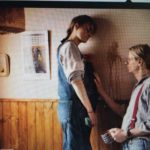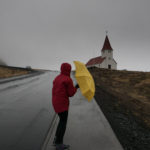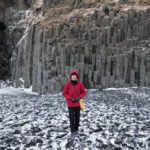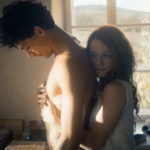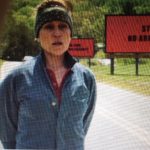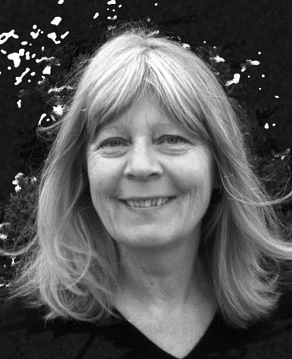I – AUF DEM JAKOBSWEG
















Zum 2. Mal auf dem Jakobsweg in Frankreich – von Aumont-Aubrac, wo wir letztes Jahr aufgehörten, bis nach Figeac. Acht Tage strammes Wanders, was dieses Mal Spuren an Knien und Füssen hinterlassen hat. Beäugt von Kühen mit Hörnern (die Aubrac Gegend ist bekannt für gutes Rindfleisch, was offensichtlich von glücklichen Kühen stammt, denen man nicht nur ihre Hörner gelassen hat, sondern auch ihre Kälber und die Gesellschaft von mächtigen Bullen) und bestaunt von verdutzten Eseln, wenn sie mit Kniefällen begrüßt wurden, ging der Weg an uralten Kirchen und Klöstern vorbei, die nicht nur als spirituelle Wegweiser dienten, sondern auch als Schlafstätten oft neben dem Glockenturm, der mit Rücksicht auf die Wanderer abends ab 10Uhr schwieg. Morgens Nebel über den Wiesen noch schöner als in San Francisco, und nachmittags Sonne, so heiss, daß man den Schnee herbeisehnte, der die Landschaft fünf Monate im Jahr bedeckt. Nach fast 200km am Ziel – nicht in Santiago de Compostela, aber in Figeac, unserem Ziel, noch zwei Monate von Compostela entfernt.
II – DIE ELBPHILHARMONIE








Elbphilharmonie Hamburg. Ein beeindruckendes Gebäude, wie ein riesiges Schiff aufs Wasser der Elbe gebaut von den Architekten des hiesigen de Young Museums. Aus Backstein der Rumpf, wie die Speicherhallen nebenan, und obendrauf die Takellage, geschwungen wie große Segel (erinnert an Frank Gehry’s Disney Hall in LA) . Das Schiff scheint jedem Wetter zu trutzen – nichts kann es zum Kentern bringen. Unterwassermotive ziehen sich durch den langen tunnelartigen Eingang, der die Besucher hochsaugt auf eine Plattform mit Blick über die Hafenstadt. Von dort kann man ohne eine Konzertkarte nicht in die Säle oder die Restaurants gelangen. Entgegen allen Warnungen war es nicht schwer, einige Monate vorher über die offizielle Webseite gute Karten zu – für amerikanische Verhältnisse – geringem Preis zu bekommen. Unser Konzert war im grossen Saal, in dem sich Meer- und Wasser fortsetzten. Der Fußboden aus hellem sandfarbendem Holz, an den Wänden Muschelmotive, die Sitze hart gepolstert rund um die Bühne und hoch hinauf, wie in vielen neuen Konzerthallen. Auf dem Programm stand das Ensemble Resonanz. Ein junger Mann, nicht der Dirigent, gab eine ungewöhnliche Einführung ins Programm, das der Stimme gewidmet war. Nicht nur der Gesangstimme, sondern auch der politischen Stimme, die, wie er betonte, wichtiger denn je ist, zu erheben und zu artikulieren. Das Publikum klatschte begeistert. Den Abend eröffnete eine Solostimme mit allem, was eine Stimme an Tönen hervorbringen kann. Die Solistin war irgendwo oben in den Rängen platziert, für viele nicht sichtbar aber gut hörbar, glasklar vom Pianissimo zum Forte. Stravinsky’s Apollon musagête unterstrich die messerscharfe, klare Akustik der Halle. Zum Schluß Mozarts’s Jupiter Symphonie zu der ich mir einen wärmeren Ton gewünscht hätte, der die einzelnen Instrumente mehr verschmelzt als seziert. Dennoch ein wunderbares Erlebnis. Ich bin ganz gespannt auf eine große Symphonie mit großer Besetzung im großen Saal der Elphi.
III – NEUE FILME IN BERLIN
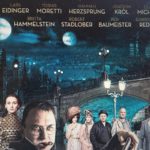

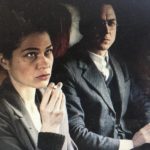





Bis Ende September war Sommer in Berlin mit richtig heissen Tagen dabei, an denen ich mich ins Kino verzog, wo es allerdings auch nicht immer AC gab. Wie die Berliner nur den heissen Sommer überlebt haben? Meine kleine Wohnung im 5. Stock fühlte sich wie im Treibhaus aus, Ventilatoren waren längst ausverkauft. Leider hab ich um einen Tag WERK OHNE AUTOR, den neuen Film von Donnersmarck, verpasst, aber er kommt hier sicher auch bald ins Kino. Mein Augenmerk war auf MACKIE MESSER – Brechts 3Groschenfilm gerichtet, der aufrollt, was schief ging, als die Oper Anfang der dreißiger Jahre zum Film werden sollte. Wie zu erwarten, wollte Brecht nicht nach der Pfeife der Produzenten tanzen und die Verhandlungen als Beispiel kapitalistischer Ausnutzung anprangern. Das hat er erreicht. Lars Eidinger spielt Brecht überzeugend in Ledermantel mit Zigarre und klugen Zitaten, die alle aus Brechts Mund stammen. Kurt Weill, Lotte Lenya, Helene Weigel scharen sich um den Meister, der unbeirrbar seinen Weg geht. Immer wieder faszinieren die Lieder, die auch für diejenigen, die sie zum xten Mal hören nichts an Qualität verloren haben – wenn nur Max Raabe nicht eingeladen worden wäre, Mackie Messer zu singen. Sein weiches Gesicht, in dem nur die Lippen dramatisch verzogen werden, um dem Text eine schräge Note zu geben, scheinen das Beißende aus den Liedern zu nehmen. Zum Glück schließt alles mit Brechts kratzender Stimme, er liest “An die Nachgeborenen”. Ein langer Film, der am Schneidetisch hätte gestrafft werden können um den Fokus nicht zu verlieren. Am Ende ist man froh, dass alles vorbei ist, aber man ist auch froh, den Film gesehen zu haben, ein Kapitel in der Geschichte der Dreigroschenoper, das zugleich ein bedeutendes Kapitel in der deutschen Geschichte ist. BALLON basiert auf der bekannten Ballonflucht von zwei Familien aus der DDR in den späten siebziger Jahren. Die spannende, unglaubliche Geschichte wurde von Disney vor 30 Jahren verfilmt und konnte erst jetzt, nach Ablauf der Rechte, als deutscher Film auf die Leinwand kommen. Man kennt den Ausgang und dennoch sind die letzten Szenen so überwältigend, daß man in Tränen ausbricht.—- Zum Schluß ein paar lobende Bemerkungen zu ALLES IST GUT, ein Debutfilm von Eva Trobisch, der auf vielen Festivals gelaufen und Preise bekommen hat. Eine #MeToo Geschichte über auferzwungenem Sex nach einer durchfeierten Nacht. Die Konsequenzen sind weitreichend, obwohl die junge Frau, der alles widerfahren ist (sehr einfühlsam gespielt von Aenne Schwarz) so tut, als ob alles gut ist. Aber nichts ist gut, was dieser bemerkenswerte Film deutlich zeigt.
IV – KUCHEN UND KUNST








Nach über 50 Jahren hab ichs endlich zu einem kleinen Klassentreffen geschafft. Nur eine Handvoll der 20 Abiturientinnen unserer Klasse sind erschienen und davon hab ich nicht mal die Hälfte wiedererkannt. Ja, wir sind älter geworden. Gibt es wohl noch Gemeinsames außer der Schule, die wir alle besucht haben, dachte ich beim Hinfahren. Worüber kann man sich nach so vielen Jahren wohl unterhalten? Es war einfach: über Reisen, Kultur und Politik wurde gesprochen, über Familie, Krankheit und Todesfälle. Alle sind jetzt Rentner, viele nach einer Lehrerkarriere. Und nun werden Enkel gehütet, man reist, töpfert, Christina schreibt auf Plattdeutsch – “Wüer” ist bei Amazon.de erhältlich (was heisst nur wüer?). Andere malen – nicht Picasso verdächtig (die Hühner mit 13 gemalt, hab ich gerade in Perpignan entdeckt), aber den Zenith des Schaffens kann man auch noch im hohen Alter erreichen, sagen die Forscher. Auf jeden Fall sind aus meinen Mitschülern hervorragende Kuchenbäcker geworden: Apfel- und Zwetschenkuchen, Windbeutel mit viel Schlagsahne schmeckten so lecker als käme es aus der Küche meiner Mutter.









